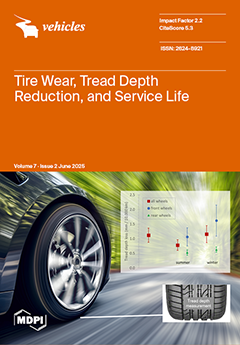Open AccessArticle
Basic Study on Operation Control Systems of Internal Combustion Engines in Hybrid Small Race Cars to Improve Dynamic Performance
by
Hayato Yamada, Masamune Kobayashi, Yusuke Ebashi, Shinobu Kasamatsu, Ikkei Kobayashi, Jumpei Kuroda, Daigo Uchino, Kazuki Ogawa, Keigo Ikeda, Taro Kato, Xiaojun Liu, Ayato Endo, Mohamad Heerwan Bin Peeie, Takayoshi Narita and Hideaki Kato
Viewed by 996
Abstract
Hybrid vehicles utilize multiple power sources, making them energy-efficient and enhancing both fuel efficiency and dynamic performance. As a result, hybrid vehicles have recently been adopted as race cars, which demand high powertrain performance. The hybrid vehicle system comprises two power sources: an
[...] Read more.
Hybrid vehicles utilize multiple power sources, making them energy-efficient and enhancing both fuel efficiency and dynamic performance. As a result, hybrid vehicles have recently been adopted as race cars, which demand high powertrain performance. The hybrid vehicle system comprises two power sources: an internal combustion engine (ICE) and an electric motor, both of which require precise control. Controlling the output of the internal combustion engine is particularly challenging. This study investigated the dynamic response of an actuator in an electronic throttle system. The experimental results demonstrated that optimized parameters significantly improved the dynamic response. As a result, we propose a mechanism for hybrid vehicle performance and report the characteristics of an electronic throttle. The improvement in throttle opening can be verified by adjusting the P term.
Full article
►▼
Show Figures





